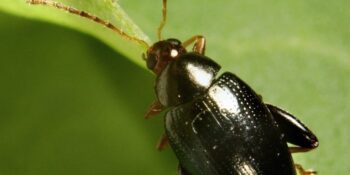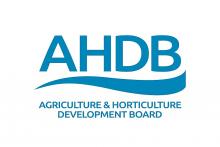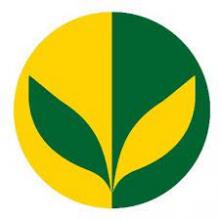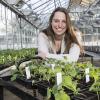Adult cabbage stem flea beetles are about 5mm long and shiny black with a hint of green/blue.
Damage
Adult cabbage stem flea beetle, Psylliodes chrysocephala, chew holes in cotyledons and early true leaves, giving rise to ‘shot-holing’ symptoms, which can result in stunting and poor plant vigour. If severe, beetle feeding can kill the seedlings even before they emerge. Larvae also bore into leaf petioles and, later, into the main stems, which can also affect plant vigour. The crop is most vulnerable at emergence, as beetles can feed on and destroy the growing point. Once true leaves appear the crop is more tolerant of attack. A warm dry autumn will favour egg laying and early hatch of larvae, coinciding with smaller, more vulnerable plants.
Management Recommendations
Oilseed rape is a crop which can compensate for substantial levels of damage by regrowth. Therefore monitor the crop. Control is only needed when there is high pest pressure. The AHDB currently suggests treatment if:
- Adults have eaten over 25% of leaf area at the cotyledon–2 true leaf growth stage
- Adults have eaten over 50% of the leaf area at the 3–4 true leaf stage
- The crop is growing more slowly than it is being destroyed
- There are over 5 larvae/plant or over 50% of leaf stalks are damaged by larvae
An AHDB damage survey (for Autumn 2016 and Spring 2017) found that at assessment 1 there were 29% of assessed crops that had damage levels that exceeded the spray threshold (25% of leaf lost), whilst at assessment 2 there were 6% of assessed crops that had damage levels exceeding the spray threshold (50% leaf lost). At the end of assessment 3, it was estimated that 1.2% of assessed crops did not survive the winter due to CSFB damage.
Cabbage stem flea beetle resistance to pyrethroids has been confirmed and is increasing in the UK (See article here).
Neonicotinoid-treated seed cannot be planted following the restrictions imposed in December 2013.
The main natural enemy is the wasp Tersilochus microgaster, which parasitises larvae in spring. Another parasitoid is Microctonus brassicae which affects the adult stage. All parasitoids may be vulnerable to pyrethroids. This means that repeated applications of pyrethroid may do more harm than good especially when the target pest has evolved resistance to them. Parasitoids remain as pupae in the soil until the next crop, and may be damaged by ploughing. Minimum cultivation after rape favours parasitoid survival.
Cultural control: Sow when the time is right into a seed bed with adequate moisture and preferably rain forecast afterwards; ideally before the main CSFB migration before 10th August OR after it in the latter part of September (after 20th). Seed beds should be fine, not cloddy and after sowing the soil should be rolled. Use slightly higher seed rates to compensate for plants being lost to beetles. Providing good nutrition and favourable growing conditions shortens the vulnerable early growth stages and helps plants survive flea beetle attack. Flea beetles are extremely mobile and can easily migrate from field to field which means crop rotation is not usually a viable management strategy for this pest. It has been suggested that crop plants not silhouetted against a bare-soil background, for example when sown into a cover crop and are less obvious to the pest. Mixtures that seem to work are berseem clover or white clover (the latter used only with Clearfield OSR). Yellow sticky traps may help to reduce infestations.
Cabbage stem flea beetles hatch at around harvest time and overwinter in field boundaries before starting to feed and lay their eggs from early September. The presence of suitable field boundary habitats could aid retention of beetles by previous crops where volunteer oilseed rape plants would provide an early food source.
There is a need to develop new interventions for this pest following the loss of neonicotinoid seed treatments. Plant breeders are working on development of OSR varieties with an "early vigour" trait. This is a promising development because if the crop can be established and grow faster than it is eaten by the beetles it might stand a better chance.
Information and image from Rothamsted's Croprotect webpage supported by BBSRC NERC Sustainable Agriculture Research & Innovation Club








